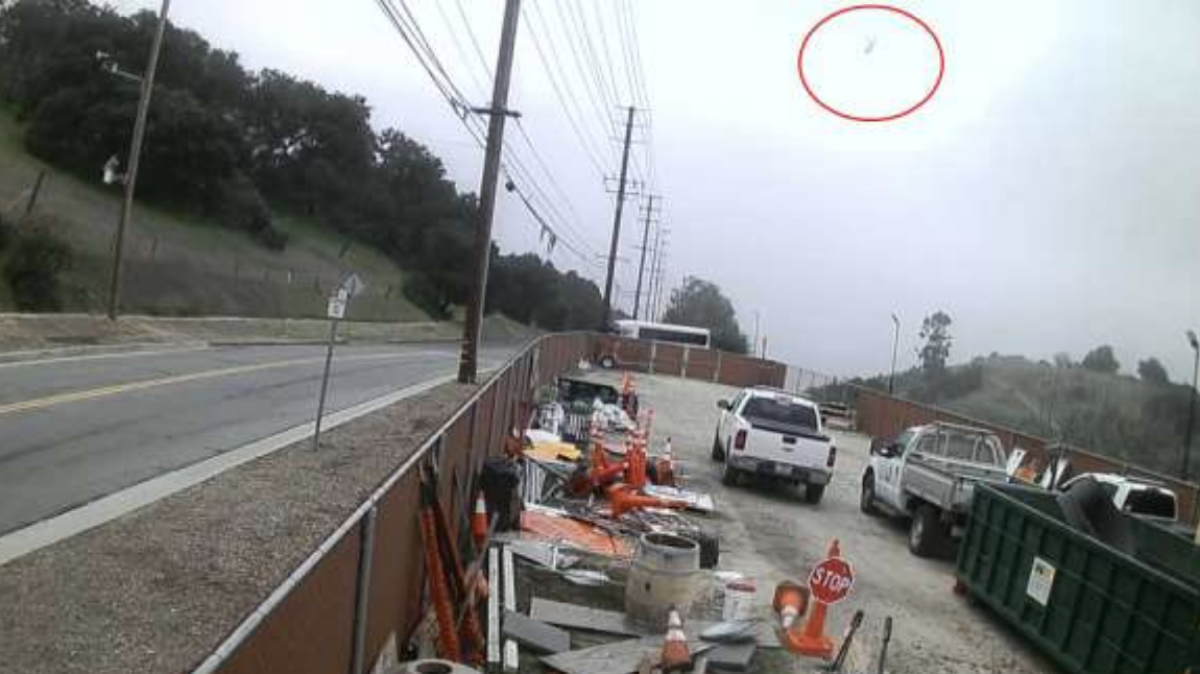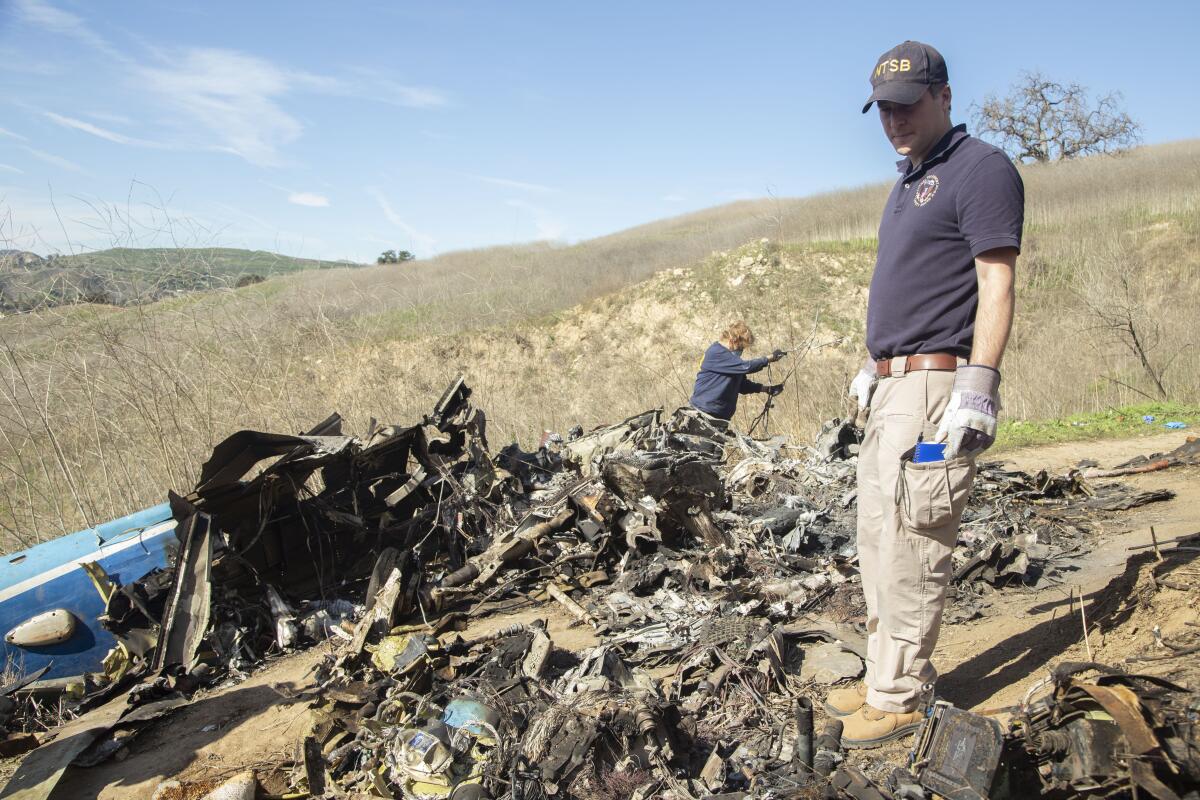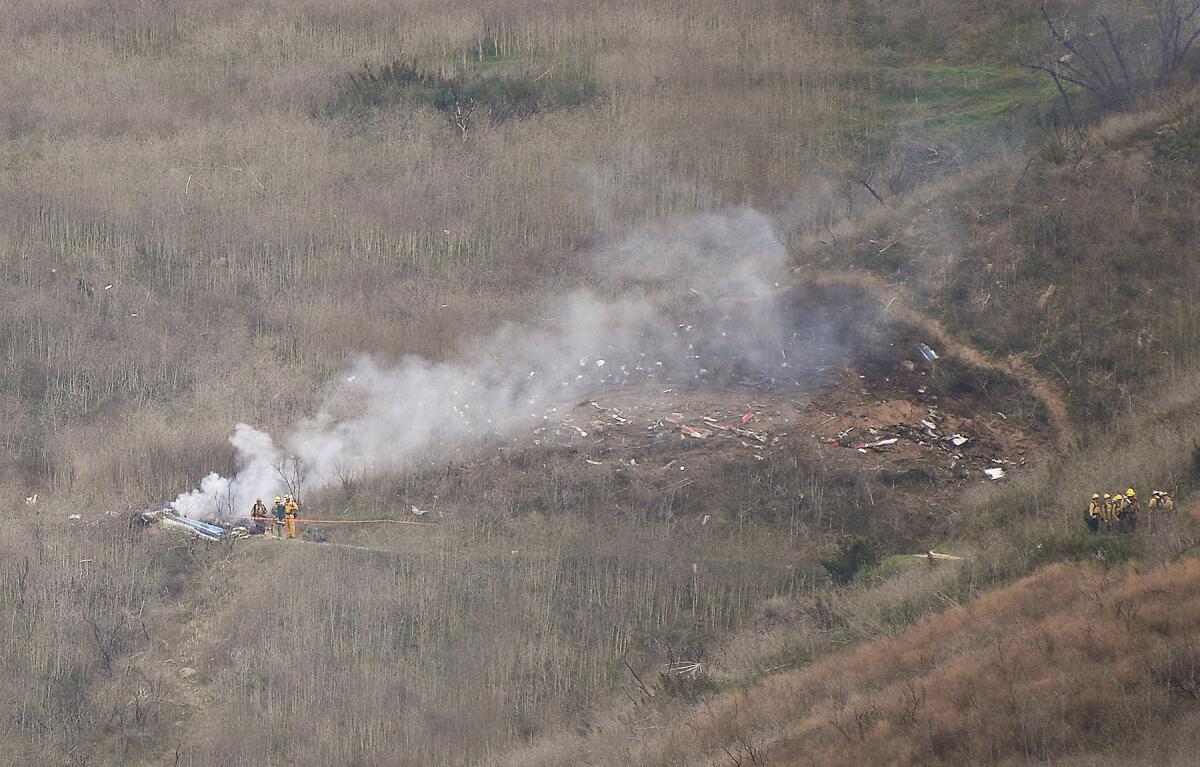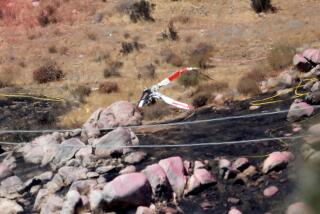Nearly two weeks into Kobe Bryant crash investigation, foggy weather a leading factor

The official cause of the Kobe Bryant helicopter crash is still likely months away. But the latest report by the National Transportation Safety Board continues to suggest more attention toward cloudy conditions and low visibility as leading factor.
The preliminary report found no evidence of engine failure before the crash, focusing in some detail on the weather conditions. The NTSB noted that videos and photos from the public “depict fog and low clouds obscuring the hilltops.” The preliminary report repeatedly noted that the pilot had struggled with a low cloud ceiling.
The report included several photos, including one showing the chopper flying under cloudy conditions shortly before it hit a hill in Calabasas.

Investigators had asked the public for images of weather conditions at the time of the crash on the morning of Jan. 26, and some of those were released Friday. Witnesses said visibility had been very poor when they heard the chopper slam into the hillside.
RELATED: The perplexing final moments of the Kobe Bryant crash
A witness on a mountain bike trail told investigators that the area was “surrounded by mist” and that he heard the sound of a helicopter and saw a blue and white chopper emerge from the clouds, passing from left to right.
“He judged it to be moving fast, traveling on a forward and descending trajectory. It started to roll to the left such that he caught a glimpse of its belly. He observed it for 1 to 2 seconds, before it impacted terrain about 50 feet below his position,” according to the report.
The 1991 Sikorsky S-76B was carrying parents, coaches and players to a youth basketball game at Bryant’s Mamba Academy in Thousand Oaks. The other eight people who perished in the fiery crash were Bryant’s 13-year-old daughter, Gianna; Christina Mauser; Payton and Sarah Chester; John, Keri and Alyssa Altobelli; along with pilot Ara Zobayan.

Other questions remain unanswered, including the reason for the pilot’s choices in the final chaotic moments of the flight.
NTSB member Jennifer Homendy said last week that the helicopter, which lacked a terrain warning system, was at 2,300 feet when it lost communication with air traffic controllers. The helicopter was descending at more than 2,000 feet per minute at the time of impact.
According to the new NTSB report, eight seconds after that, the helicopter was going down with the rate of descent “increasing to over 4,000 feet per minute” and the ground speed reached about 184 mph on impact.
The chopper hit the hillside at an elevation of 1,085 feet, about 20 to 30 feet below an outcropping. Even if the pilot had been able to fly above the hilltop, he would have faced new hazards, officials said.
Helicopter pilots and crash experts have suggested the crash shows telltale signs of a pilot who became spatially disoriented in the clouds in the moments before the deadly impact on the foggy hillside.
More to Read
Sign up for Essential California
The most important California stories and recommendations in your inbox every morning.
You may occasionally receive promotional content from the Los Angeles Times.











